As an Amazon Associate I earn from qualifying purchases.
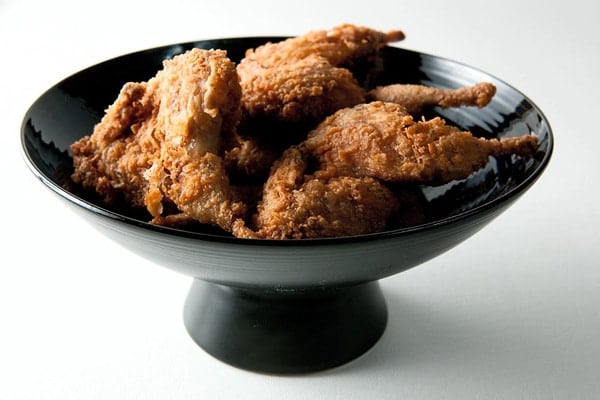
If you don’t love a good piece of fried chicken you are not a real American. And if there is anything more fun to eat than fried chicken, it’s fried quail.
They taste more or less like chicken (especially when fried), and because they are smaller, it’s basically a party when a big bowl of them comes out to the table.
Why? Because there is no way to eat fried quail without just diving in. No forks, knives or other utensils needed. Your fingers are your only tools. Sweet, juicy meat. Salty, spicy, crispy batter. Oh man, you will find yourself scraping the batter off the ribs with your teeth you’ll want it so much.
There are a few ways to go about perfecting your fried quail. First should be to minimize bones. To do this, I will either cut the quail in half or spatchcock them, which is to say cut out the backbones to flatten the birds. Either way, I will pull out the ribs and snip the saber bone — which looks like its name — to make the quail easier to eat.
Another trick will be to let your battered quail rest in the fridge for a while, up to a few hours, even. This helps the batter stick to the quail, so it won’t all come off with your first bite.
You probable don’t want to serve fried quail at a fancy dinner party, unless you want to break the fussiness of the evening and force your friends to get their hands dirty — something I actually wholeheartedly recommend. Just have some extra napkins nearby.
Beware: Holly and I once ate 10 of these little birds by ourselves. So make more than you think you need. A lot more, especially because they are almost as good served the next day as a cold lunch as they are piping hot.
Looking for more game to fry? I have similar recipes for buttermilk fried rabbit, fried pheasant, and fried walleye.)
Buttermilk Fried Quail
Ingredients
- 8 to 16 quail, cut in half
- 2 cups buttermilk
- 2 tablespoons Italian seasoning, or 1/3 cup of mixed chopped fresh herbs like oregano, thyme and parsley
- 2 teaspoons paprika
- 1 tablespoon garlic powder
- 1 teaspoon cayenne
- 2 cups flour
- 1 tablespoon salt
- 3 cups vegetable oil
Instructions
- Mix the buttermilk with the all the spices (except the salt). Coat the quail with the mixture and set in a covered container for as little as an hour, and as much as 8 hours.
- When you are ready to fry, pour the oil into a large pan — a big cast iron frying pan or Dutch oven is ideal — and heat over medium-high heat. You want the oil to almost submerge the quail halves.
- Meanwhile, take the quail out of the buttermilk and let it drain in a colander. Don’t shake off the buttermilk or anything, just leave it there.
- Let the oil heat until it is about 325°F; this is the point where a sprinkle of flour will immediately sizzle. Do not let the oil smoke! When the oil is hot, pour the flour and salt into a plastic bag and shake to combine. Put a few quail into the bag and shake to get it coated in flour. NOTE: If you want your quail "extra crispy," let the battered birds sit on a rack until the flour absorbs the moisture of the buttermilk coating. Then give them a second shake in the flour bag. You'll get a much thicker, crunchier crust that way.
- Fry for about 4 to 5 minutes. Fry gently — you want a steady sizzle, but nothing raging, and you definitely don’t want the quail to just sit in oil. You might need to adjust the heat a bit. Turn the quail over and fry for another 3 to 4 minutes. You will probably need to fry in batches, so just leave the unfried quail in the colander until you are ready to flour them up and fry them. Don’t let the floured pieces sit.
- When the quail are good and fried, let them rest on a rack set over a paper towel to drain away any excess oil. Serve hot or at room temperature.
Nutrition
Nutrition information is automatically calculated, so should only be used as an approximation.
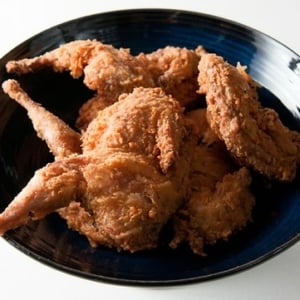
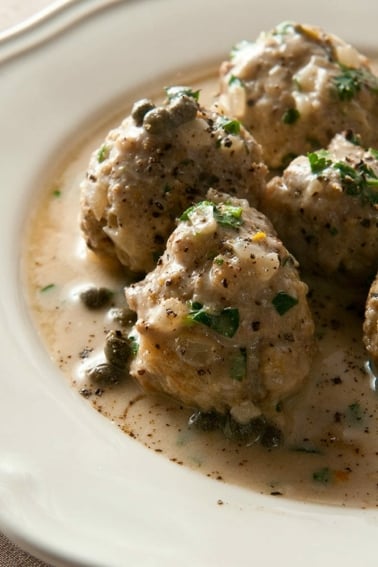
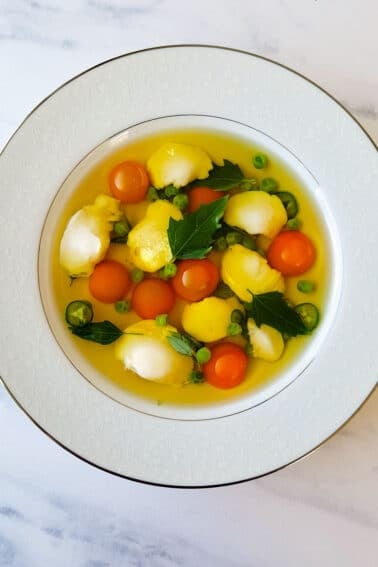
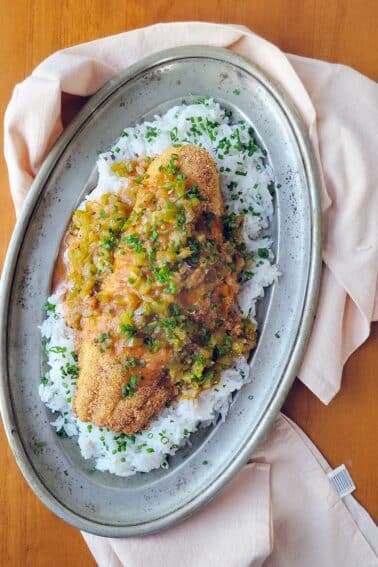
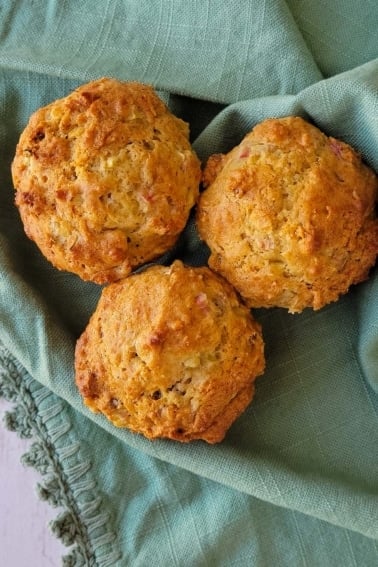
I separate the legs and breasts, so want to try this recipe for the legs only. Will the time change? 7-9 minutes seems long…Thanks!
Darren: Shoot for golden brown. But I’ve had tough quail legs before, those little running buggers… Maybe simmer them all for 45 minutes before frying?
I have the cookbook from State Bird Provisions, and their recipe is very close to yours, particularly with time and temp. Some of the best quail I have ever eaten – meat slid right off the leg, but no way a CVQ cooks like a raised bird. I’ve tried bbq, sous vide, roasting, and they all come out tough. Confit is next…
Hands down, the best fried quail I have ever made. The entire recipe from the brining, buttermilk/spice blend, and frying temp/technique is perfect as written!
Twice you say to let the floured pieces sit if you want it crispy, then you say don’t let them sit, just keep them in the colander until you’re ready to fry. Which is best?
J: You leave the buttermilked pieces in the colander to drain, but the optional step of letting the floured pieces sit in the fridge a while does help the coating stick.
My ? is, “ I brine first, after that I soak in buttermilk “, correct?
Tracy: Correct.
Made with chukar on 10/12/22. Dredged buttermilk-soaked bird halves in the following seasoned flour:
Seasoned Flour
• 1 cup all-purpose flour
• 1 cup cornstarch
• 1 cup white rice flour (or use more APF)
• 1 tablespoon fine sea salt
• 1 tablespoon garlic powder
• 1 tablespoon onion powder
• 1 teaspoon freshly ground black pepper
• ½ teaspoon sweet paprika
• ¼ teaspoon ground turmeric
Otherwise followed recipe. Came out absolutely delicious.
I made this last night and have to admit it was not only easy but delicious! I would highly recommend this recipe to anyone and we will certainly be making it again. Thanks
I’ve made this several times and find it always produces moist quail which highlights the sweetness of the bird. The preparation is key and well described here!
Could you use this recipe with an air fryer?
Laura: I have no idea. I’ve never used one.
Did this one for the first time with some Colorado bob whites, I had killed earlier in the season. Did not disappoint, I’ll be frying my birds with this recipe when the fried bird mood strikes! I don’t think I cut the birds in half properly, but that didn’t seem to matter much.
I’ve had quail made many different ways but have to admit this has been my favorite. It is highly suggested to brine wild quail to reduce the gaminess of the meat. I’ve tried skipping the step to reduce the prep time but could tell the difference but still tasty. Also use a honey berry reduction as a dipping sauce that really enhances the flavor when it’s served hot…